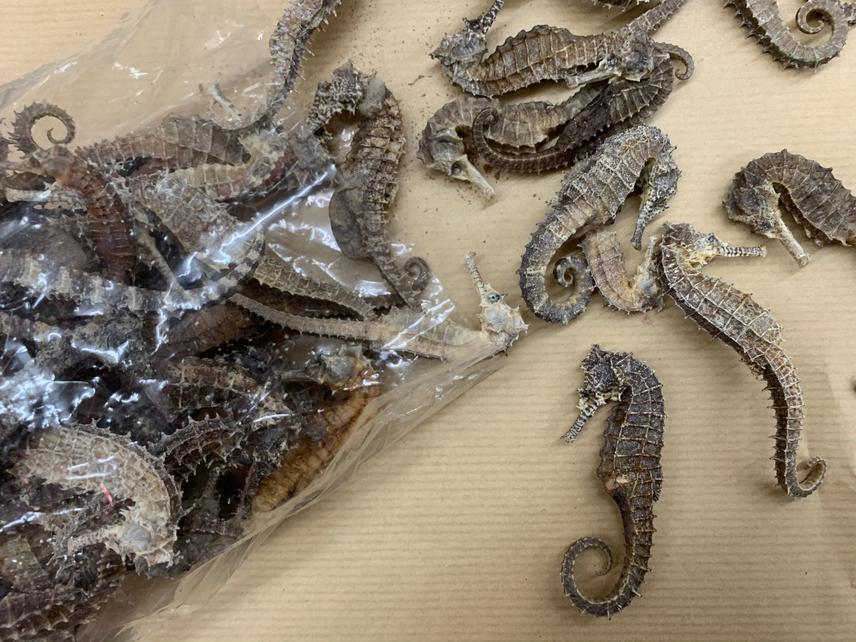Articles featuring the project.
Quantifying non-target seahorse fisheries and domestic traditional medicine-based trade in Malaysia
Seahorses (Hippocampus spp.) are well known for their importance ecologically, medicinally, and are valued culturally by communities across the globe. However, seahorses are species of great conservation concern, as they are heavily traded for use in traditional medicine, as curios, or aquarium fishes, especially in Southeast Asia. Although there are studies on the consumption usage and cultural beliefs related to seahorses, seahorse fisheries, and trade, those aspects have not been sufficiently explored in Malaysia.

Dried seahorses sold as traditional Chinese medicine in Selangor, Malaysia. © Reana Ng.
This project aims to address the gaps in local knowledge of seahorse trade diversity and volume in the traditional medicine, curio, and aquarium trade and to document the cultural beliefs and perceptions towards seahorses among Malaysians. The main objectives of this project are:
(1) To determine the local supply for trade, seahorse trade diversity, sales volume, value of seahorses, source of traded seahorses, their size and sex ratio in Malaysian traditional medicine, curio, and aquarium trade.
(2) To characterize the patterns of consumption usage of seahorses and underlying motivation (including cultural beliefs) among fishers, traditional medicine practitioners, and the public of different ethnic groups.
(3) To determine the degree of non-consumption usage of seahorses and awareness level of seahorse threats among fishers, traditional medicine practitioners, and the public of different ethnic groups.
This project involves multiple surveys namely the fisher, traditional medicine, and aquaria survey through semi-structured interviews with local fishers, traditional medicine practitioners, and aquarium traders respectively as well as an online public survey.
A clear understanding on the cultural context of seahorse usages for medicinal and other purposes, seahorse fisheries and trade will inform effective and culturally relevant conservation and intervention measures. As a country under the Appendix II seahorse listing of CITES, Malaysia is required to ensure that its international seahorse trade does not threaten wild populations. Implementation of the listing must be met if pressures on seahorse populations are to be reduced. However, this remains a challenge for Malaysia due to the lack of relevant knowledge including seahorse trade, which then leads to a lack of urgency. By acquiring current information about the local knowledge, cultural uses, and seahorse trade, this can assist Malaysia to meet obligations under CITES by providing valuable advice on the best way to implement the listing, and thus promote sustainable seahorse trade. The findings could also demonstrate the need to reinforce seahorse trade regulations both locally and internationally.